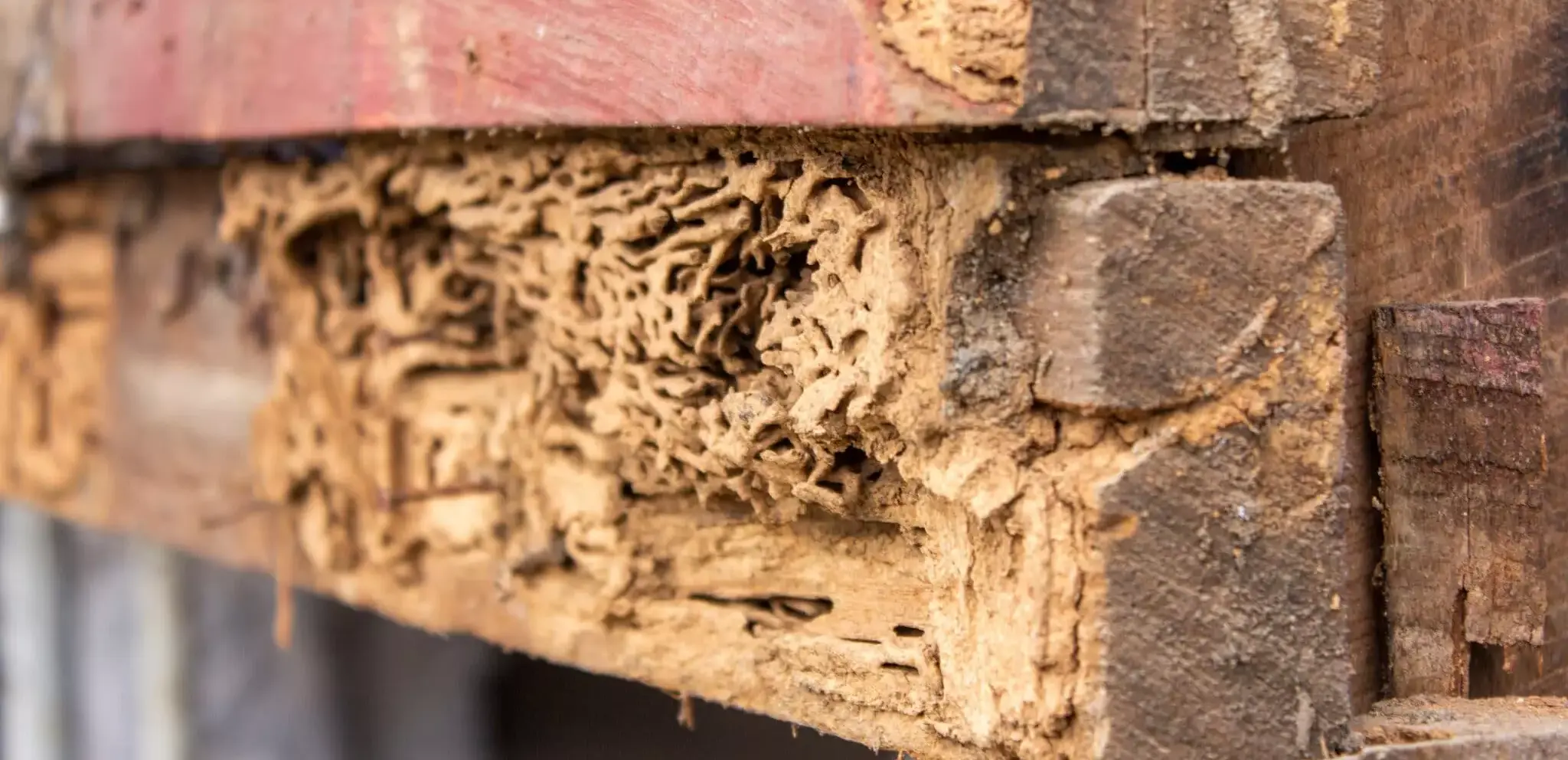Services Offered by Termite Inspection Companies
Knowing what services termite inspection companies offer can assist you in making an educated selection that meets your short- and long-term requirements. Many providers offer annual termite inspections with preventive treatments for consistent protection. Depending on your situation, this may be more valuable than addressing termites only once.
Exterior Inspection
Professionals performing termite inspections will look around the outside of your home for visible damage. They’ll inspect structures touching the ground, outdoor wood, and damp areas that could lure termites, such as the following:- Cracks in expansion joints
- Deadwood
- Firewood stacks
- Pooling water around the foundation
- Standing water on the roof
- Wood mulch close to the foundation
- Wooden deck supports
- Wooden fences
Interior Inspection
Exterminators typically combine a comprehensive outside check with a thorough inside check. Inside, inspectors concentrate on damp areas, areas with wood or cellulose, and potential termite entry points. They often look at the following:- Attics
- Basements
- Crawl spaces
- Doorframes
- Exposed beams or studs
- Exterior walls
- Hardwood floors
- Under-sink cabinets
- Windowsills
- Wooden furniture
Treatment Recommendations
If termites are detected in your home, your pest control professional will propose a customized treatment schedule to eliminate the termites safely and successfully. Alternatives to chemicals are available, including physical barriers, heat, and biological control methods like beneficial nematodes. Chemical treatments are more common and highly regulated by the Environmental Protection Agency (EPA). Two main types are termite baits and liquid termiticides. Termites baits consist of a cellulose material laced with a slow-acting termiticide. Liquid termiticides soak into the soil around your home to create a protective barrier. Fumigation is another chemical option. This involves vacating your home, sealing it inside a tent, and filling it with a gas that’s lethal to termites. To fix your current termite situation, the inspection company might recommend a multipronged strategy.Future Vulnerabilities
Comprehensive termite inspections evaluate for areas prone to termites and evaluate current activity. Inspectors check for wood-to-soil contact, leaks, and other conditions that might draw termites to your home. An inspection may identify drainage issues or termite entry points that call for landscaping changes or structural improvements. Making these changes can help avoid future infestations.Continuous Monitoring
Certain termite treatments need regular inspection, reapplication, or replacement to remain effective. For this reason, many reputable exterminators offer ongoing service agreements that include annual or quarterly inspections. As part of this monitoring, technicians check for signs of new or increased termite activity. One component of this service involves swapping out baits and reapplying liquid termiticides as needed. The recurring visits lessen the risk of extensive damage and frequently come with a warranty.Termite Warranties
Many termite inspectors offer a reservice warranty with their services, which covers the costs of additional appointments or more work needed to tackle the termite infestation if they come back within a given time period after service. Some pest control companies offer extra protection with a repair warranty. This covers fixes for any new termite damage following treatment.Factors To Consider When Choosing a Termite Inspector
Homeowners should consider several key factors when choosing a termite inspector.- Cost: Contact at least three companies for quotes. Remember that some may insist on inspecting the problem before providing an estimate.
- Experience: How long a company has been in business can reflect its dependability and skill. More time in the field usually translates to more experience dealing with termite invasions.
- Guarantees: Choose companies that offer warranties or guarantees covering reservice or repairs. Make sure to get the agreements in print for your records.
- Licensing and insurance: Pesticide applicators in North Dakota must obtain a license through the North Dakota State University Extension Pesticide Certification Program. You should always verify that your provider is properly insured. Any technician who uses restricted-use pesticides must be registered as an applicator by the EPA.
- Reputation and reviews: Look up each company on the Better Business Bureau (BBB) website, check online reviews from customers, and talk to friends and family for their recommendations. Feedback from other customers speaks volumes about the level of service you can expect.


